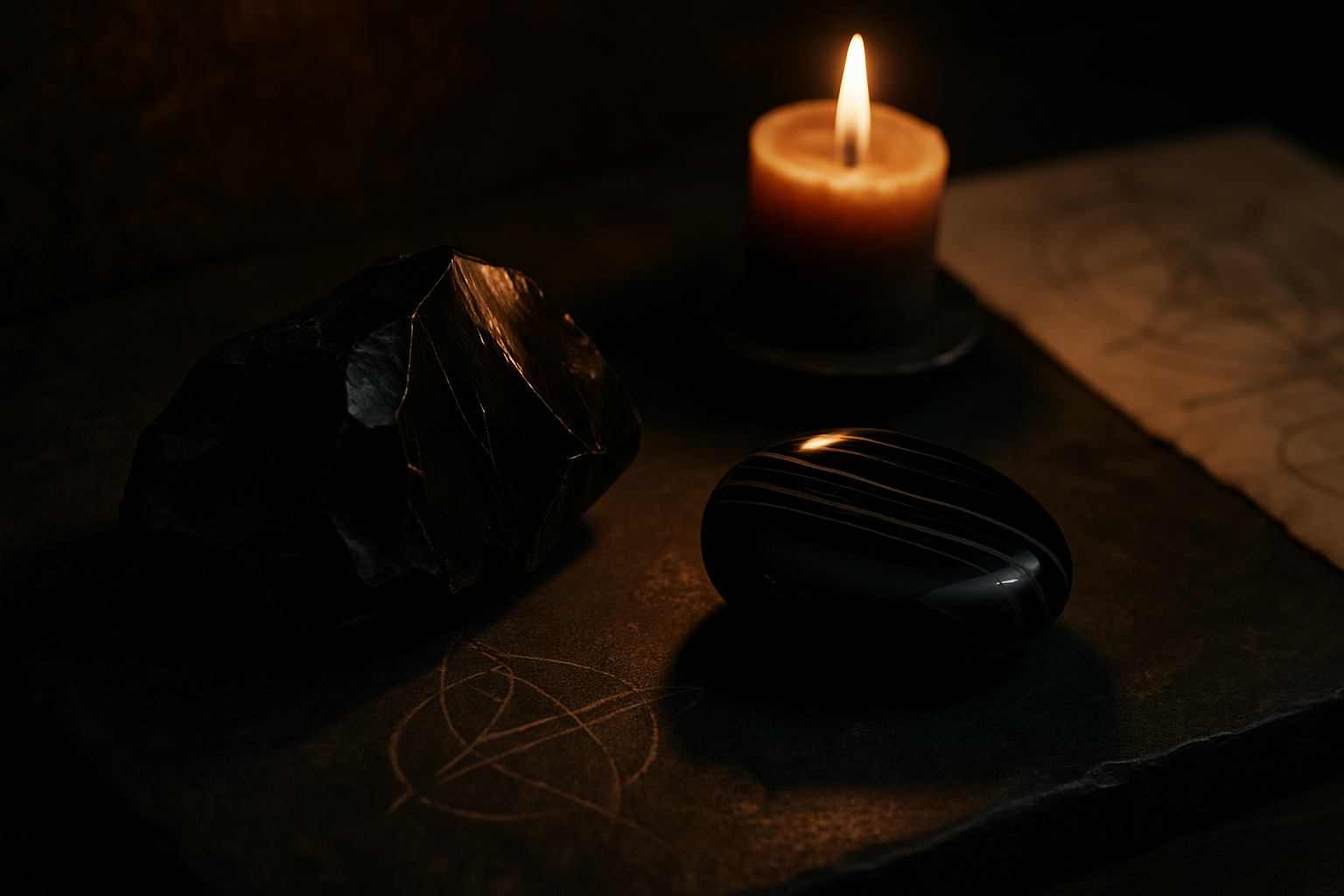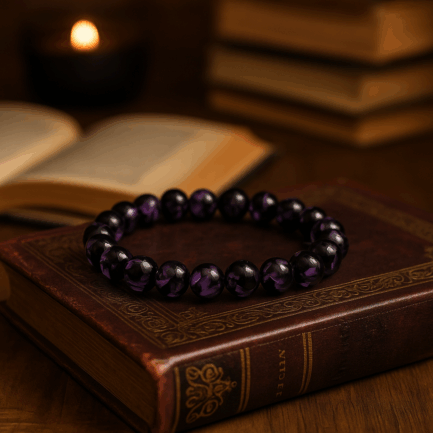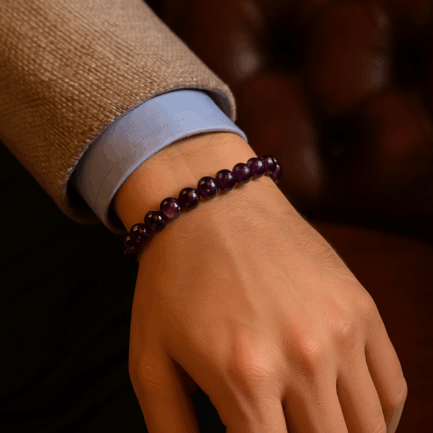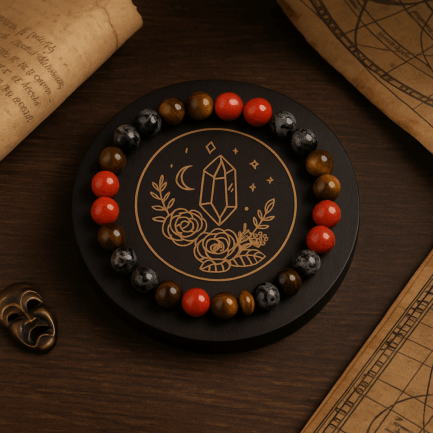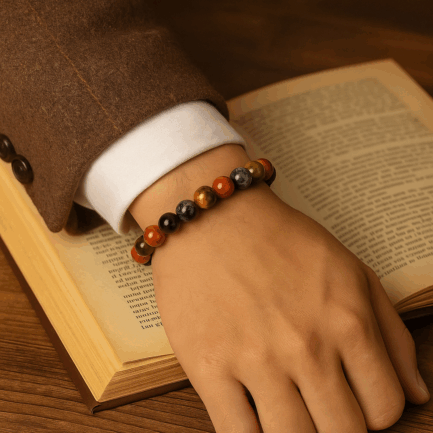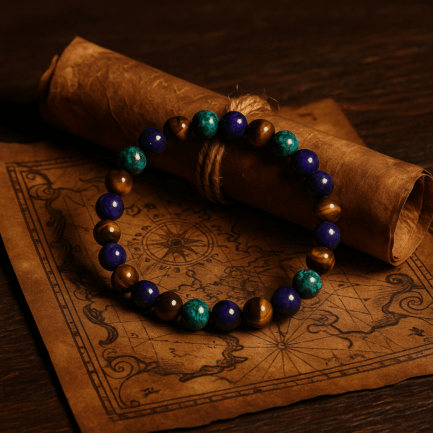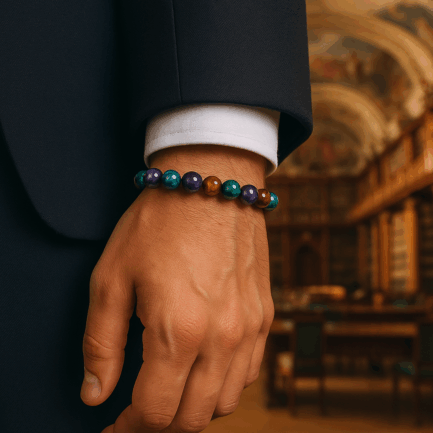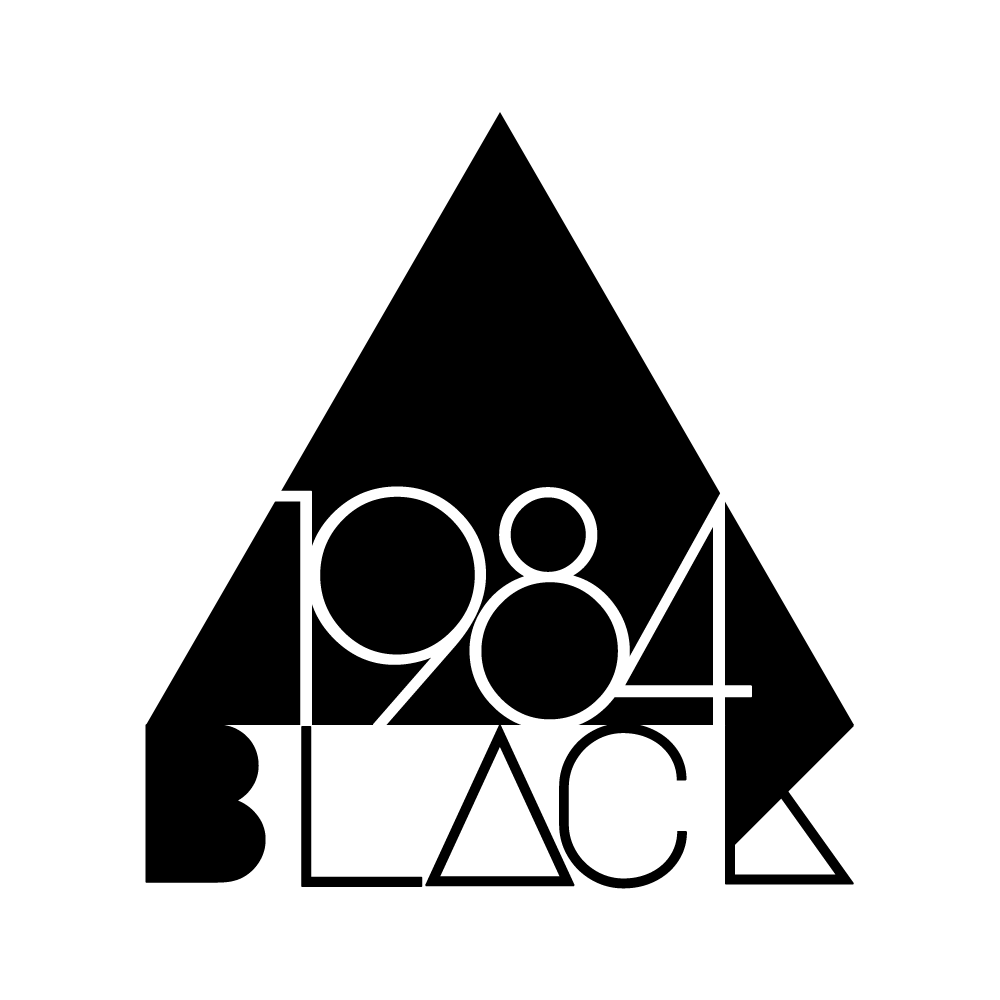The Void You Choose to Carry
They are not bright.
They do not glitter.
They do not seek the eye.Black stones are not made to be admired.
They are made to hold.They hold absence.
They hold pressure.
They hold what others discard.Obsidian. Onyx. Jet. Tourmaline. Shungite.
All names, but they speak of the same archetype:
A stone that swallows light.
The Stone as Void
Most materials reflect. Most shout their presence. But the black stone withdraws.
It is not inert. It is active in its refusal.
When light touches its surface, it does not bounce; it vanishes.
This is not decoration.
This is containment.
Where diamonds scream for attention, the black stone silences.
Where gold asserts dominance, the black stone observes.
This is why it is chosen; not for what it shows, but for what it does not reveal.
Not a Jewel, A Threshold
To wear a black stone is to walk with an opening.
A black portal pressed against the skin.
These are not stones of status. They are stones of intention.
You do not flaunt them. You deploy them.
In ancient rites, they lined mirrors, altars, blades.
Not because they dazzled, but because they absorbed.
Absorbed energy. Absorbed projection. Absorbed fear.
They were placed at thresholds and worn during crossings; funerals, initiations, departures, transformations.
A black stone does not celebrate.
It protects.
For Those Who Move Unseen
There are people who wear light. Who project radiance, image, and certainty.
Then there are those who operate in the shadows. Who do not broadcast.
Who listen more than they speak. Who step lightly and leave no trail.
For them, the black stone is not aesthetic. It is tool. It is armor.
To wear one is to shield the self. To draw perception inward.
To carry a pocket of silence in a world of noise.
Black stones do not amplify. They contain.
Emotion. Memory. Signal.
They are worn not to attract, but to filter.
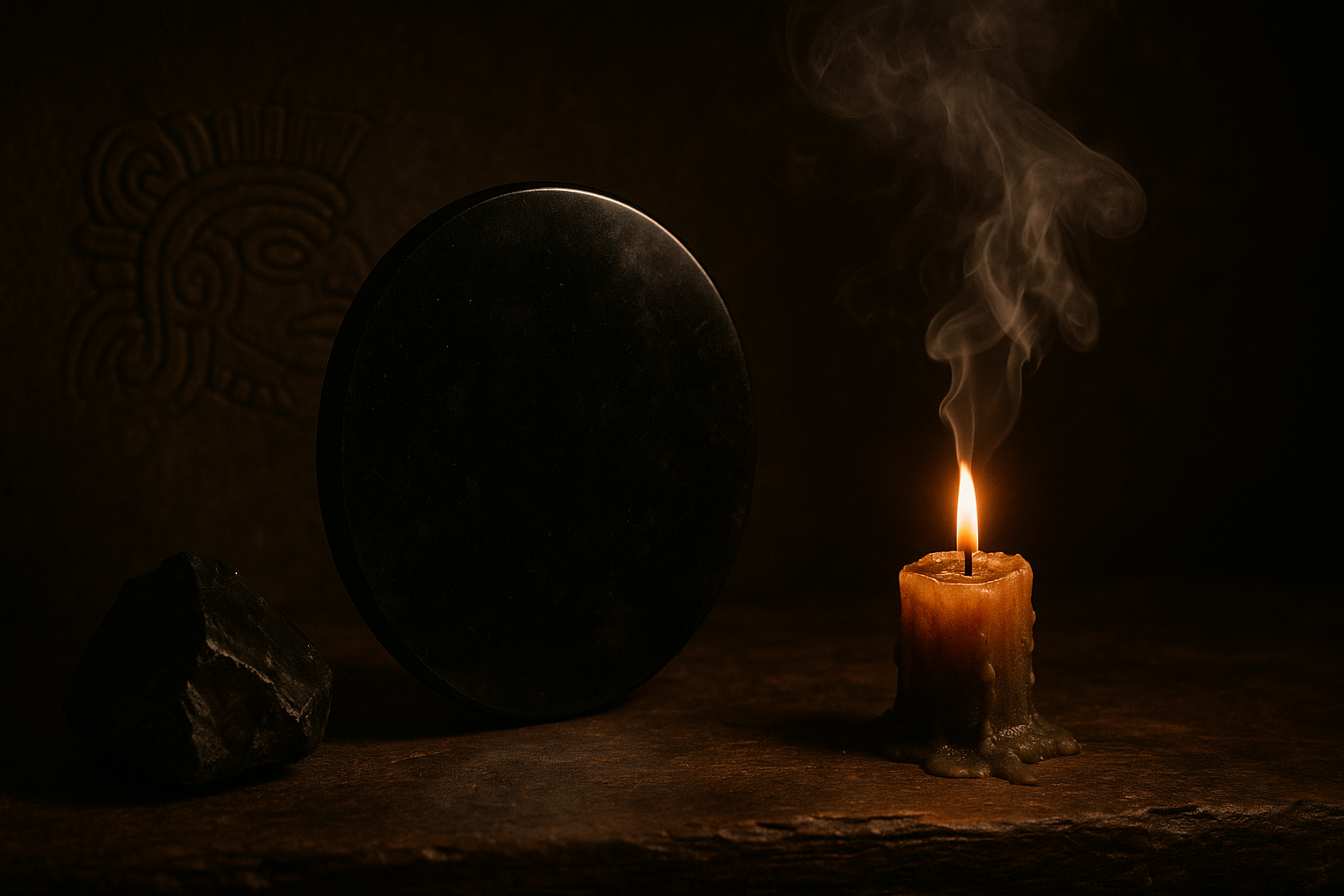
Rituals from the Threshold
Antique Uses of the Black Stone
These are not modern gestures.
These are ancient arrangements; where black stones served not as ornaments, but as operators.
The Mirror of Smoke (Obsidian – Mesoamerica)
A disc of obsidian, upright in shadow.
The priest fasts. The flame flickers. Visions surface.
This mirror reveals not futures — but unspoken truths.
It is confrontation, not divination.
The Silence Ring (Onyx – Mesopotamia)
A banded ring pressed to the lips before speech.
Worn into negotiation, cooled by the tongue.
Only once warmed may words begin.
The stone steadies thought, anchors silence.
The Sleepless Sentinel (Jet – Rome)
Worn by mourners, laid under pillows.
Jet absorbs grief and guards dreams.
After a year, the bead is buried at the base of the home —
so the dead do not return.
The Flame Crossing (Tourmaline – India, Tibet)
A shard passed through flame three times:
Fear. Ego. Distraction.
Then cooled in spring water.
Only the steady may proceed.
The Curse Sink (Shungite – Russia)
Hung above the door.
It does not block — it absorbs.
Boiled monthly in saltwater.
Broken stones are buried at crossroads.
The Blade and the Blood (Obsidian – Sacred Use)
A vow sealed with a single cut.
The blade, broken, buried in three places:
water, fire, and earth.
The promise binds — so long as the fragments are never found.
Each rite whispers the same truth:
Black stones are not passive.
They are agents.
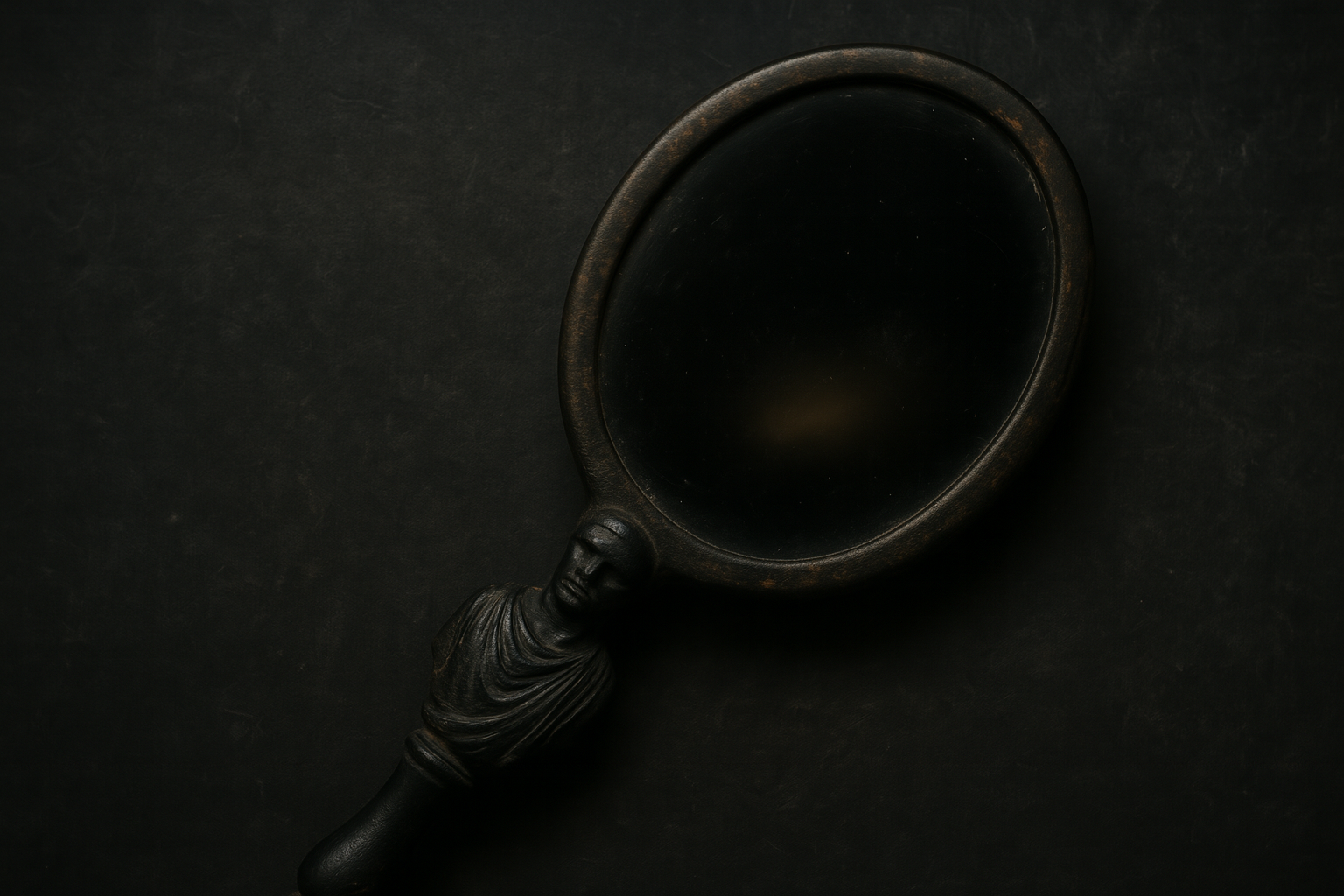
Why We Choose Them
At 1984.black, we choose black stones not to impress, but to insulate.
They appear in cuffs, rings, pins; never loud, always exacting.
They sit where the eye almost misses them, until it doesn’t.
And when you see them, it’s not their presence you feel.
It’s their pull.
The quiet gravity that says:
“You are seen — but not accessed.
You are here — but not exposed.
You move — but not for them.”
Hidden Functions, Quiet Powers
-
Obsidian: Formed in volcanic trauma. Razor-sharp. Used for seeing the future and cutting the past.
-
Onyx: Layered memory. Stabilizer. Believed to absorb excess emotion and anchor decision-making.
-
Black tourmaline: Worn to transmute interference; emotional, electromagnetic, energetic.
-
Jet: Fossilized wood, softened by time. Used in mourning and transition.
-
Shungite: Pre-Cambrian, carbon-rich. Purifier. Filter. Stone of reduction.
These are not myths.
These are metaphors worn on the body, for those who understand what it means to hold contradiction.
Closing Reflection
To the outsider, black stones are dull.
To the wearer, they are decisive.
They are not passive. They are chosen.
Not to shine, but to shield.
To wear one is not to decorate the self.
It is to declare:
“I am not here to be seen.
I am here to remain intact.”
And that, in a world obsessed with exposure, is the rarest form of power.

